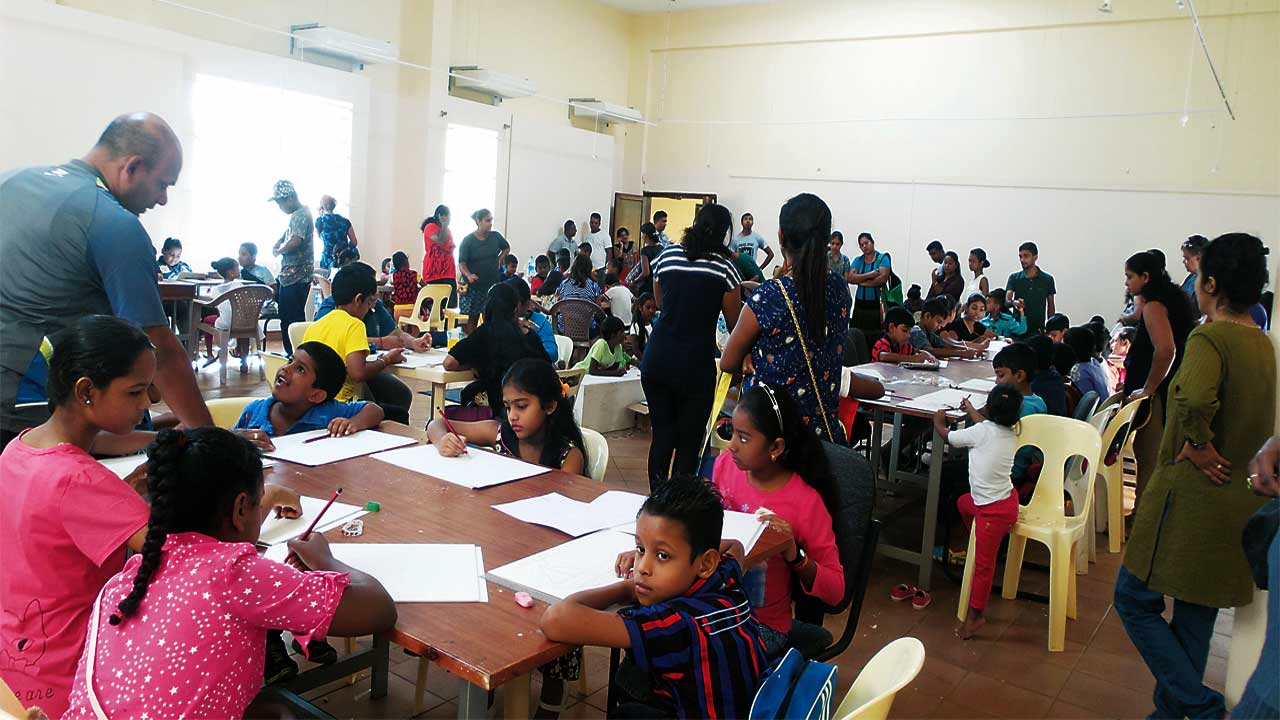
Dr Pavitranand Ramhota the officer in charge of Rabindranath Tagore Institute wants to promote a fresh approach, new ideas and innovation since he took over the reigns of the establishment located in the North of the country. Since his appointment, the RTI has been innovating. The main hall, which was once isolated and underutilised, is now teeming with life.
Contemporary social ills affect youngsters emotionally and have negative impacts on them. Art therapy is the solution to better equip the community to deal with such issues. Art is a way to detect the thoughts and attitudes of a cultural group.

Artist Rashila Ramchurn organised, along with Mr Ramhota, a session of Art Therapy – a concept which challenges the monologue of art. It is also an essential tool for artistic development and social change. On Saturday 13th May 2017, the Rabindranath Tagore Institute carved out a space for art therapy with around 150 children from neighbouring villages participating enthusiastically. The artist has a degree in Fine arts, PGCE in Visual Arts, MSc in social development and is completing a PhD in cultural anthropology. She uses art as a means to engage with and work for the welfare of society. She is passionate about bringing art to those who would not normally encounter or experience it.

Art Therapy altered the landscape of RTI from an isolated building to a lively place. Children were accompanied by parents. Participants were provided with art materials, painting boards and quality paper. Art therapy allowed participants to search for themselves and explore their inner selves. Children and parents engaged in photographing and helping each other by sharing materials and ideas. It was like a big family gathering through a humanistic approach. The artist said that her aims are to foster, sustain and revitalize the neighbourhood by giving meaning and purpose through art.
Participants were given two hours to draw and paint. Children's paintings are much more than what they may appear, says Rashila. In the 1980's when children were given a paper and coloured pencils, they painted mum, dad, grand-parents, brother, sister and a pet in front of a house with a tree. Each element in a drawing has a symbol and reflects the character of its author.
“Painting is one of the best ways to understand a community and it's culture. The artist observed that nowadays, most participants paint an isolated house which means people live in isolation.” Landscape of mountain and trees with leaves means love while bare trees indicate depression. Ships, lonely bird flying are ways to express the desire to travel. Paintings of people were scarce. While landscape of flowers shows feminity,” she says.
Each art work was unique. Children's art works are not proportionate and has little to do with real life. Rashila Ramchurn explains that the size of the house in the drawing revealed the character of the drawer. If too small, it shows the person is a bit isolated while if the house is too big, it shows being overwhelmed. If children put more detail in the house like windows and doors and sidewalks it shows a desire and appreciation for connection. Drawings of big figure shows sign of impulsivity while tiny head and no arms is a symbol of insecurity. Teeth, big hands and long arms indicate signs of anger.
Participants enjoyed painting and the parents were happy about the art therapy. Prizes were awarded to eighteen participants. A drama show was also held. Participants and parents said that the event was a success.







